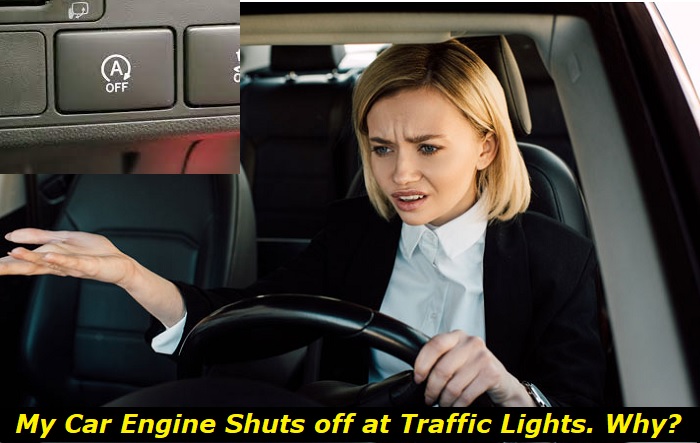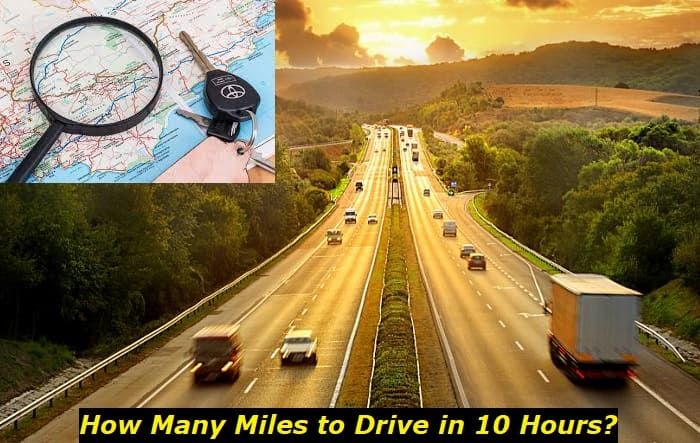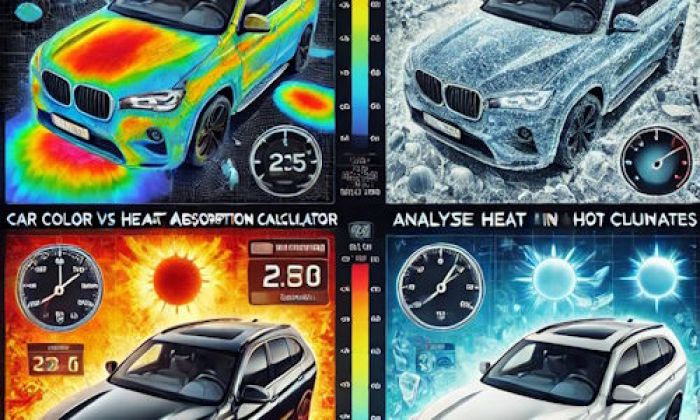Does your new car turn off when you stop at traffic lights or in start-and-go traffic? Your car has the latest start-stop technology, which shuts the engine automatically when your car stops. The system is annoying at first, but you get used to it with time. This article explains how the start-stop system works, including its pros and cons. We will also discuss the sensors and enhancements in new cars that support it and teach you how to disable it when you need a break.
Engine systems use highlights
- Level of importance:important
- When done:when driving or maintaining the vehicle
- Cost of mistake:$100 - $300
- How to avoid:read driver's manual, ask your dealership for guidelines
- Consequences:wrong use ofimportantfunctions, minor engine damage
- DIY solutions:possible

How Does the Start-Stop System Work?
The start-stop technology started in Europe to enable car owners to reduce fuel consumption and comply with global emissions regulations. The system is still fairly new in the US. The technology stops and restarts the car engine depending on the driver's actions. It detects through sensors that a car has come to a halt, especially when the driver is stuck in heavy traffic or waiting at the traffic lights.
The start-stop system shuts down the engine automatically and then restarts when the driver is ready to move again. In other words, the system does what you should do when stuck in traffic. You should stop the engine to save gas. However, many car owners keep the engine running to avoid delays when the traffic lights change.
In a manual transmission car, the driver activates the system by stopping, engaging the neutral gear, and releasing the clutch. The start-stop system automatically restarts the engine when the driver presses the clutch. The engine will start before the driver changes the gear from the neutral position.
The engine may restart while the car is stationary if some functions require power, such as the air conditioning system. The electric accessories depend on the battery when the engine is off. If the battery lacks enough power to support them, the engine will restart even before the driver presses the clutch. However, most car batteries in modern cars generate enough power to keep every device and accessory running when the engine is off.
In an automatic transmission car, the technology shuts down the engine when the driver presses the foot brake pedal until the car stops. However, the system does not stop the engine if the driver uses an alternative method to stop the car, such as engaging the gearbox and handbrake.
Sensors that Support the Start-Stop Technology
The technology relies on information or signals from the wheel speed, neutral gear, and crankshaft sensors. The Engine Control Unit manages and synchronizes the start processes with other engine functions. The start-stop technology also requires the electronic battery sensor to detect the battery voltage and temperature.
The battery requires compensation for the voltage used to start the engine multiple times. Electronic assistants and accessories need enough battery charge to function. Hence, communication from the electronic battery sensor is critical to keep everything running well.
The Necessary Enhancements to Support the Start-Stop Technology
All accessories depend on the battery for power when the technology turns off the engine. Hence, new car models with start-stop technology have powerful batteries to supply power when the engine is off. Car manufacturers are also designing car models with powerful starters that can withstand multiple starts.
As an owner of a new car with a start-stop system, you may worry about the components and engine wearing off before time. If the car has this system, it most likely has enhanced components that can withstand the engine starts and stops without premature wear and tears. For instance, the starter unit has an improved gear unit and bearings.
Some manufacturers coat engine bearings or the crankshaft with special polymers to prevent abnormal wear on the bearings. The start-stop system increases the number of charging cycles and power load on the battery. Hence, modern cars with this system have enhanced flooded batteries or Absorbent Glass Mat (AGM) to support electrical devices.
Other necessary enhancements include powerful engine control units and sensors to coordinate all systems and ensure no function stops when the start-stop system is activated. Carmakers are also adding an independent cooling unit to ensure that the coolant supply is sufficient and constant. The additional cooling protects heat-sensitive components, such as the turbocharger bearings.
Your car may have a few of the necessary enhancements depending on the model. The enhancements should give you peace of mind about maintenance costs. The components can handle the additional engine restarts and have a full-service lifespan.
The Pros and Cons of the Start-Stop System
The system saves 3-5% of fuel drivers waste in slow traffic. Some car models save up to 12% of gas with the system. The percentage may be small, but it adds up over time. The technology favors drivers that live in congested cities.
If you activate the system, you will notice a change when driving through start-and-go traffic. Your journey is quieter and more peaceful because the engine shuts down when not in use. You are supposed to turn off the engine when idling, but you will most likely forget as you wait to move.
Another advantage of the start-stop system is reduced carbon emissions. Pollution is reduced significantly when all cars stop carbon emissions when stationary. Carbon emissions are now a global concern because of the evident impact on the environment, health, and climate. Car manufacturers are participating in controlling carbon emissions through start-stop technology.
One disadvantage of the technology is that it annoys new car owners. If you have not used a car with this technology or the dealer forgets to explain the technology, you will be frustrated in the first few trips. The idea of the engine starting and stopping is not appealing to some drivers.
The constant engine cranks are annoying, especially for large vehicles. In addition, the car interior may become uncomfortable if the AC does not function optimally when running on the battery. The experience will depend on your car model. Some batteries are powerful enough to keep the AC running at its best performance.
The technology also requires powerful components to function. It reduces the lifespan of car components, increasing repair and replacement costs. The system may harm your car engine if the vehicle lacks enhanced components to support the technology. Luckily, most cars have enhancements to protect your car parts.
Does The Start-Stop System Harm the Engine?
The technology affects the engine and its components more than other parts because of the constant stops and restarts. However, the system does not harm the engine. Accelerated wear and tear of engine components are expected, but car manufacturers have gone a step further to stop the issue. The engine bearings can withstand the start cycles.
Normal cars can withstand 100,000 start cycles. Modern cars with start/stop technology can handle 250,000-300,000 start cycles without the engine bearings wearing off. You can enjoy driving your new car without worrying about the engine or other components.
Can You Disable the Start-Stop System?
The system has several advantages, including fuel savings and reduced carbon emissions. However, you can shut off the system if you do not like the experience. Most cars with the technology have a switch to turn the system on and off. You can turn it off when you start the engine and remain in control of the engine throughout the journey.
The downside of using the switch is that you must turn the system off every time you turn on the engine. You can disengage the system at the next stop if you forget to turn it off. You can also choose to disengage it when you expect to drive through heavy traffic if the engine cracks annoy you.
Drivers have also found a new way to bypass the system. If your car's AC compressor runs on the drive belt, you can turn on the AC when approaching a halt to disable the system. Car accessories are often redesigned to run on the electric motor instead of the engine's serpentine belt, including the AC. If the AC is not yet redesigned, you can use it as often as needed to bypass the engine stops and restarts.
Final Thoughts
Car manufacturers have introduced the start-stop system in modern car models to save fuel wasted when idling. If you are driving a manual car, the system comes on when you slow down, change to the neutral gear, and release the clutch. The engine will automatically start when you press the clutch to continue driving. In an automatic car, pressing the foot brake pedal to a halt signals the system to shut off the engine.
Modern cars have all the necessary enhancements to prevent accelerated wear and tear of the engine components. The cars have heavy-duty batteries and starters to support multiple engine starts. The system does not harm the engine. Hence, you can drive your new car without worrying about high maintenance costs. In addition, you can switch off the start-stop system if you find it disturbing or unnecessary in any journey.
About the authors
The CarAraC research team is composed of seasoned auto mechanics and automotive industry professionals, including individuals with advanced degrees and certifications in their field. Our team members boast prestigious credentials, reflecting their extensive knowledge and skills. These qualifications include: IMI: Institute of the Motor Industry, ASE-Certified Master Automobile Technicians; Coventry University, Graduate of MA in Automotive Journalism; Politecnico di Torino, Italy, MS Automotive Engineering; Ss. Cyril and Methodius University in Skopje, Mechanical University in Skopje; TOC Automotive College; DHA Suffa University, Department of Mechanical Engineering






Add comment